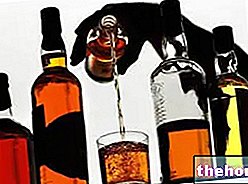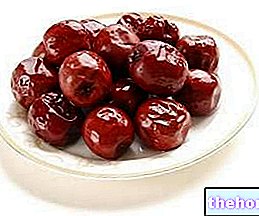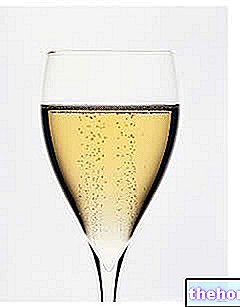History and current legislation
Beer is one of the oldest drinks, thanks to roots that go back to ancient Pharaonic Egypt; a beer that, at that time, was very different from the present one, just as the wine produced by the Greeks and Romans was far from that of our days. In both cases, in fact, the fermentations were spontaneous, while today they are strictly controlled with regard to times, temperatures, and, above all, the microbial strains used for fermentation.
According to Italian law, beer is:
the product obtained from alcoholic fermentation with strains of Saccharomices carlsbergensis or S. cerevisiae of musts prepared with malt - whether or not roasted - of barley or wheat, or of their mixtures and water, flavored with hops or its derivatives or with both.
Until a few years ago, beer could only be produced starting from barley malt, while that of other cereals had to be declared on the label as a (source) beer. Since 1998, thanks to the new legislative decree DPR 272/98, it is It is also possible to produce beer with wheat or with mixtures of barley and wheat; other cereals can also be used - such as rice malt, even broken or ground or in the form of flakes, as well as starchy and sugary raw materials - provided that in an amount not exceeding 40%.
Pure beers, such as rice only or corn only, must declare their source on the label (e.g. rice beer or corn beer). These "alternative" beers are having considerable success both for their organoleptic characteristics, which enhance particular culinary combinations, and because they are suitable for the diet of celiacs.
Chemical composition and properties
Beer consists of:
• Water: approx. 85%
• Alcohol: 3 - 9%
• Dry extract: 3 - 8%
In the dry extract we find various nutritional principles, such as sugars, nitrogenous substances, tannins, dextrins, B vitamins, salts and acids characteristic of malt and hops.
Beer also has a certain energy content, including - for the common one - between 30 and 60 kcal per 100ml. Unlike wine (which gives empty calories *), the energy power of beer does not derive only from alcohol, but also from dextrins and protein substances present in the drink. In the latter, amino acids are present in the amount of about 0.2g per 100ml of beer and, although the biological value is modest, they include all eight essentials.
Total carbohydrates (simple, oligosaccharides and short polymers) range between 2 and 5g / 100ml, with an average of 3.5g / 100ml.
* However, it should be specified that beer, compared to red wine, does not have the same content in phenolic antioxidants; these molecules, in the right quantities and with the due frequency of consumption, moderate cellular oxidative stress and cholesterol (total and LDL) in the blood.
BENEFICIAL PROPERTIES
At one time a popular saying was very much in vogue according to which: "Who drinks beer lives a hundred" years. "This formidable slogan, detached from its miraculous tones, may not be completely absurd; beer, in fact, is a drink that brings some nutrients, among which certain vitamins of group B and potassium, contained in more generous quantities than sodium.
B6 (or pyridoxine) and above all folic acid are very important to neutralize the negative effects of homocysteine, an amino acid whose excess (albeit with mechanisms other than cholesterol) favors the onset of cardiovascular diseases.
NEGATIVE PROPERTIES AND DANGERS RELATED TO ABUSE
To tell the truth, as far as the vitamin aspect is concerned, beer also has the ability to compromise the intestinal absorption of various molecules; among others, B1 (thiamine), B2 (riboflavin), PP (niacin) and folic acid itself (the latter, essential for preventing anemia and spina bifida in the fetus and for replication), also seem to be involved of nucleic acids).

Nutritional values (per 100 g of edible portion)
Among all, the one most affected by the negative effect of alcohol abuse is B1, not so much for its poor ability to be absorbed, but for the fact that it CANNOT be stored in the liver reserves; among other things, the irony of fate, thiamine is a coenzyme factor involved in the hepatic disposal of ethyl alcohol (for more information read the article: Alcohol and vitamin deficiency).
Not only! Irritating the mucous membrane due to the presence of alcohol, and sometimes of active yeasts, excess beer often causes diarrhea, favoring the expulsion of various mineral salts and water.
The considerable concentration of water, together with the modest content of potassium (and alcohol), gives the beer a well-known diuretic capacity, to the advantage of plasma reduction, a desirable element for those suffering from hypertension; moreover, theoretically, even only the "potassium intake without sodium (counteracting the levels of the latter in the blood) should contribute to maintaining normal blood pressure (arterial). Obviously, the" downside "implies a marked tendency to dehydration and urinary excretion of precious mineral salts (including potassium itself); this circumstance is particularly insidious for athletes and elderly people, two categories that are already difficult to keep their hydro-saline balance stable.
In reality, the effect of ethyl alcohol, albeit also diuretic and (in small doses) vasodilator, remains that of interfering with the regulation of blood pressure, favoring its INCREASE. Beer, therefore, can also be consumed by those who follow low-sodium diets but (in the ordinary, as well as for other alcoholic beverages) it should be avoided by those suffering from full-blown hypertension. To support this hypothesis, it is also possible to use a reasoning indirect type; not everyone knows that, among the risk factors of essential hypertension (excluding the genetic-hereditary bases) the most important is undoubtedly the overweight associated with a sedentary lifestyle. Apart from the fact that, for various reasons (rather obvious ), excessive consumption of beer is not associated with the sportsman's diet, there is another reason why the abuse of this drink greatly favors excess weight. Beer, although not having an AVERAGE high caloric intake, shows a nutritional composition that can promote adipose accumulation; in fact, it has the coexistence of ethyl alcohol and maltodextrin (semi-complex carbohydrates). Both of these elements are involved. in the "hyperstimulation of insulin, an anabolic hormone designed to increase: protein synthesis, synthesis of fatty acids, the synthesis of glycogen and the deposit of fat. In other words, insulin excess tends to make you fat and, if we consider that ethyl alcohol can NOT enter any metabolic pathway other than the synthesis of fatty acids within the liver (in practice, it does not provide energy and is all converted into fat) the fattening effect becomes exponential.
That's not all. The peculiar distribution of fat related to excessive alcohol consumption, or the so-called "alcoholic belly", is the result of adipose storage that favors the abdominal belt, especially the intra abdominal one (indeed called "visceral"). Abdominal obesity, which can be measured by measuring the waist circumference (in centimeters), is a very important risk factor for metabolic diseases, especially insulin resistance. Precisely the latter is directly related to the onset of type 2 diabetes mellitus, and IF associated with hypertension, it represents the most dangerous comorbidity for the manifestation of cardio-vascular diseases. It goes without saying that overweight and visceral obesity, potentially aggravated by excessive consumption of beer, are also implicated in the onset of the complex and (alas) now rather widespread "metabolic syndrome".
We continue by reiterating what has been specified regarding the "metabolic use of" alcohol, or the hepatic conversion into fatty acids. Assuming beer abuse, these fatty acids increase to such an extent in the blood as to cause a real pseudo-pathological clinical sign. In short, excess beer can also determine a form of chronic hypertriglyceridemia, more often manifested if alcohol abuse is associated with the consumption of foods rich in carbohydrates.
Obviously, these excess fats produced following beer abuse are not selectively transported and deposited; it is true that most of it ends up in fat, but a small part is retained by hepatocytes. This circumstance is the reason why, by exceeding with this drink, an enlargement and fattening of the liver can occur, better known as "fatty hepatic steatosis" (of an alcoholic nature). In severe cases, steatosis (fundamentally reversible process) can become chronic, evolving first into fibrosis and then into cirrhosis (irreversible).
Bitter beers are said to promote digestion and have a mild bacteriostatic effect. In recommended portions (330-660ml / day), someone also recommends them to prevent (but be careful, not to cure!) Gastric infections (often related to ulcers); in summary, bitter beers would seem to counteract the replication capacity of Helicobacter Pylori. What is certain is that, if the ulcer is already present, the consumption of beer tends to aggravate the course of the disease; not surprisingly, in the diet for the treatment of gastritis and ulcer, any alcoholic drink is banned with absolute irremovability. Moreover, to tell the truth, many specialists place alcohol "in general" among the very first risk factors for hyperacidity, gastritis and gastric or duodenal ulcer.
By virtue of the low alcohol content, except for higher-strength beers, a man can drink up to two, maximum three units of beer per day (as long as he does not consume other alcoholic sources during the day), while the fair sex should not exceed the two portions. Beyond these levels of intake, the consumption of beer does more harm than good, with a severity directly proportional to the alcoholic volume achieved overall.
No beer, of course, for women who are pregnant or trying to become pregnant, nor for those who are breastfeeding, despite some rumors about the alleged "lactogenic function".
Traditional beer is also forbidden for celiacs, who can instead consume the specialties in which gluten is completely absent (for this reason they are marked with a crossed ear).
A negative aspect of beer consumption frequently underestimated by consumers concerns oral hygiene. Many are convinced that alcoholic beverages, such as mouthwash, tend to reduce the bacterial load of the mouth; this is only partially true, or rather, only The bacteria of the oral cavity, although largely eliminated, reproduce however rather quickly. What many do not know is that alcohol also tends to irritate the mucous membranes of the mouth and with them also the gums, which tend to retract. . Then, by containing maltodextrin, beer provides a substrate for bacterial growth that is nothing short of exceptional. It is therefore recommended to brush your teeth even after 20-60 "consumption of beer; better not to do it immediately, since the acids of the drink, combined with the rubbing of the bristles, could excessively erode the external enamel.
We conclude by highlighting that beer, as an alcoholic beverage, is often the object of abuse; this circumstance, better identifiable as "alcoholism", is one of the most common forms of drug addiction; therefore it is always recommended a moderate use and in any case never before the age of majority.
Classification
There are two classification methods: the first is based on the alcohol content, while the second on the saccharometric degree.
According to the alcohol content:
- NON-ALCOHOLIC BEERS: alcohol by volume lower than 1.2%
- LIGHT BEERS (OR LIGHT):> 1.2 <3.5%
- BEERS:> 3.5%
- SPECIAL BEERS:> 3.5%
- DOUBLE MALT BEERS:> 3.5%
Based on the saccharometric degree (quantity of fermentable sugars
- NON-ALCOHOLIC BEER: saccharometric degree between 3 and 8 Plato degrees
- LIGHT BEER: 5 10.5
- BEER:> 10.5 ° Plato
- SPECIAL BEERS:> 12.5 ° Plato
- DOUBLE MALT BEERS:> 14.5 ° Plato
Beer production »
Other Alcoholic Alchermes Alcohol test Alcopops Cocktail Alcoholic Alcoholic units calculation Cognac Gin Grappa Alcoholic degree Grappa Limoncino Maraschino Marsala Nocino Prosecco Rum Rum Sherry Sparkling wine Spirits Wine Port wine Vermouth Vodka Vov Whiskey Categories Alcoholic foods Meat Cereals and derivatives Sweeteners Sweets Offal Dried fruit Milk and derivatives Legumes Oils and fats Fish and fishery products Cold cuts Spices Vegetables Health recipes Appetizers Bread, Pizza and Brioche First courses Second courses Vegetables and salads Sweets and desserts Ice creams and sorbets Syrups, liqueurs and grappas Basic preparations ---- In the kitchen with Leftovers Carnival recipes Christmas recipes Light diet recipes Women's, mom's and dad's day recipes Functional recipes International recipes Easter recipes Celiac recipes Diabetic recipes Holiday recipes Valentine's Day recipes Vegetarian recipes Protein recipes Regional recipes Vegan recipes





























